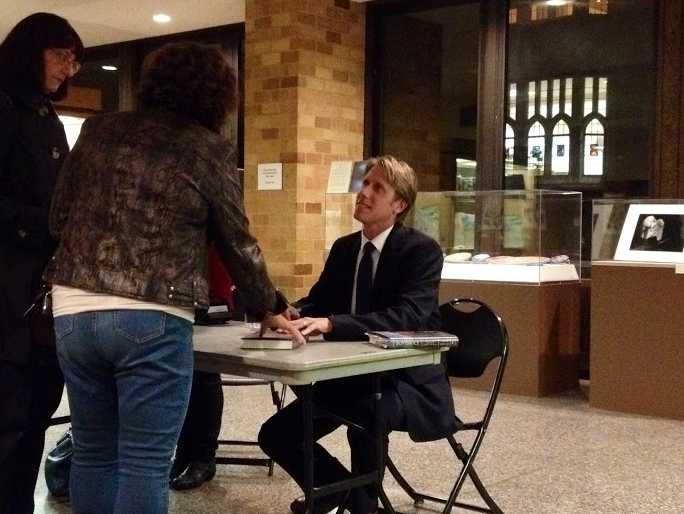John Branch, a Pulitzer Prize-winning New York Times reporter, spoke about the death of former Minnesota Wild player Derek Boogaard at St. Thomas Thursday.
Minnesota Public Radio host Tom Weber interviewed Branch about his newly-released book, “Boy on Ice: The Life and Death of Derek Boogaard.” Boogaard, who played the role of “enforcer” for the Wild, died in 2011 after accidentally overdosing on painkillers. His primary task was to be an intimidating force and a fighter on ice.

Branch said that what Boogaard lacked in skill, he made up for in his large stature and fighting ability.
“He was never the best player on his team, never the most skilled player,” Branch said. “It doesn’t matter he’s not as skilled; there’s a role for him.”
The enforcer role, however, took a physical toll on Boogaard after he sustained many concussions. According to Branch, these brain injuries, many of them minor that accumulated over time, didn’t worry Boogaard at the time.
Boogaard suffered from physical pain as a result of the injuries, which lead to his drug addiction and eventual death. After his death, Boogaard was discovered to have suffered from Chronic Traumatic Encephalopathy (CTE) as a result of his concussions, which induced addictive behavior.
“There were stretches where (Boogaard), over several weeks and several months, was getting hundreds and hundreds of painkillers from ten different team doctors,” Branch said.
Branch said he thought it was important to write his book to capture the full story and character of Boogaard that many are unaware of.
“Around the NHL, that (fighting) was all he was known for. I think people here in Minnesota knew he was much more than that,” Branch said. “Derek was such a humble kid. Between what he did on the ice and what people here in Minnesota saw off the ice and how he acted, he was a very endearing person.”
Freshman Sophie Carson said she was very pleased that she chose to attend the lecture.
“I thought it was interesting,” Carson said. “I didn’t know much about hockey, but I wanted to see (Branch) because he’s a New York Times reporter.”
Freshman Haley Zabel said she was drawn to the program because of her interest in athletics and fascination with concussions.
“Ten years ago, we really didn’t know that much about concussions,” Zabel said. She added that she was amazed to see the progress in this area presented by Branch.
Neither Carson or Zabel were familiar with Branch’s book prior to the discussion, but they plan to read it in the future.
Branch said he wrote the book in an effort to portray Boogaard in a light that is often not seen.
“It frustrates me that journalists (and) fans will take a look at these professional athletes and paint them with a very singular, small brush,” he said. “I’ve always been frustrated we as journalists paint people with these one dimensions, and I thought Derek deserved a full airing.”
This program was the first of three events in Minnesota Public Radio’s Broadcast Journalist Series. David Greene of National Public Radio speaks at St. Thomas Oct. 30.
Kathleen Murphy can be reached at murp0003@stthomas.edu.



